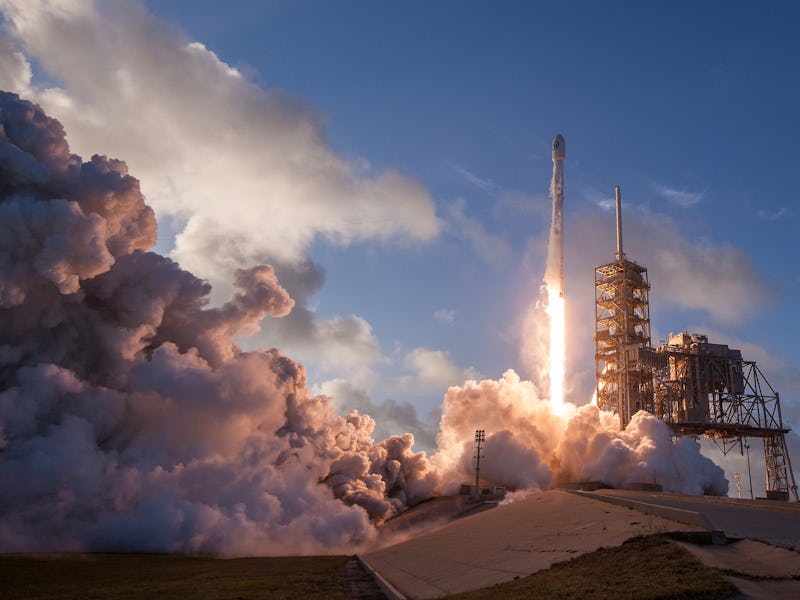SpaceX's New Mini-Falcon 9, the Block 5, Will Re-Fly in a Day
The new design will have a 24-hour turnaround and be much cheaper.

On March 30, Elon Musk, founder of SpaceX, said his next goal was 24-hour re-flight for Falcon 9-based missions. He’s already condensed the turnaround time to five months for a reused second stage booster that will launch on June 15. But a new design will allow SpaceX to truly launch, land, and launch again in one day’s time.
Earlier this month, the NYU Astronomy Club interviewed co-founder and chief tech officer, Tom Mueller, who announced a next-gen Falcon 9, called the “Block 5,” which will have a reusable thermal protection that won’t burn up the heat shielding. It will also have retractable legs that will only come out during landing.
With a cheaper design comes a few tradeoffs. The Block 5 has a single Merlin engine on it, although it’s a fairly sophisticated version of the engine. It uses some of the same tech — like the guidance computer — from the Falcon 9 (which has 9 Merlin engines), though. Mueller says the Block 5 has a significantly lower cost but the performance is “marginal.”
“If you make a rocket reusable, you have to give up some performance,” Mueller says. “Your family car can be used tens of thousands of times and drive hundreds of thousands of miles. It doesn’t have anywhere near the performance of a Top Fuel dragster, but it’s affordable and very reusable. We’ve got to find something in-between; where we have close to the performance of a Top Fuel dragster, but somewhat closer to the reuse and utility of something like a household car.”
The Block 5 design will inspire the Mars vehicle, aka the Falcon Heavy, and make it about 100 times cheaper. Mueller says the Falcon Heavy is meant to be completely reusable. Both stages will go all the way to the red planet and crew will have to make more fuel to get back. The plan is to make about 1,000 tons of propellant over a two-year cycle from Methane on Mars’ surface to send the rocket back to Earth. Mueller says this will be a challenge because it takes about half a megawatt of energy to create that much propellant.
But the Mars mission isn’t expected for at least three more years. Right now, the focus is on 24-hour re-flight, which is much more about cost than actual usability. Mueller says, “that doesn’t mean we want to fly the rocket, you know, once a day; although we could, if we really pushed it. What it does is limits how much labor we can put into it. If we can turn a rocket in 24 hours with just a few people, it’s low opportunity cost in getting the rocket to fly again.”
Mueller did not announce a date for the release of the Block 5, but joked that it will make all other rockets obsolete, just as it has been in the process of doing over the past 15 years since SpaceX started.
“We built the Falcon 1, which had a single Merlin engine on it… they said, ‘you guys were able to build a small rocket, but you’ll never be able to build an EELV-mission class rocket.’ And so we built the Falcon 9 and started flying it. And they said you’d never be able to reuse it; you’ll never be able to get to the space station. And at some point, you stop listening to it… If people think what you’re doing is impossible then you must be doing the right thing.”